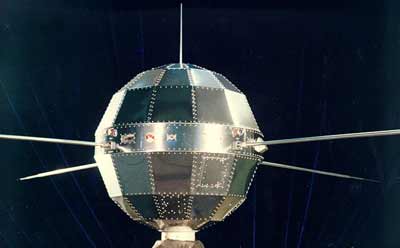
The Chinese Long March 5b rocket stage will re-enter Earth's atmosphere soon. It's part of China's second generation family of rockets. britannica.com/technology/Cha…
The Long March rocket family is named after the 1934 retreat of the Communist Red Army in the Chinese civil war. It was a significant event in Mao Zedong's rise to power. #LongMarch5 #spacejunk en.m.wikipedia.org/wiki/Long_March
The early Long March rockets were based on Intercontinental Ballistic Missile design. China's first satellite, Dong Fang Hong 1, was launched by a Long March 1 rocket in 1970. astronautix.com/c/changzheng1.… #LongMarch5B #spacejunk
Spacecraft are symbolic as well as technological artefacts. Dong Fang Hong means 'The East is Red', a song that became the unofficial anthem of the People's Republic of China in the 1960s. The satellite broadcast the song for 20 days in orbit. #spacejunk #LongMarch5B 

Dong Fang Hong 1 has been in orbit for 51 years. It stopped working in 1970. It's still up there, now a piece of space junk. There's even a piece of debris from the Long March 1 rocket which launched it still in orbit. #spacejunk #LongMarch5B
In case you're wondering, the biggest polluters of space are the US and USSR/Russia, who are responsible for most of the space junk between them. #spacejunk #LongMarch5B
Long March 5b is in the middle of a series of rockets. It was preceded by variants of the LM (or C-Z in Chinese) 1, 2, 3, and 4, rockets. LM 6, 7, 8 and 11 are already active. LM 9 is in development. #spacejunk #LongMarch5B
China invented rocket science in the 12th century CE. The technology migrated from China to India, and from there to Europe/North America. Early rockets were weapons. smithsonianmag.com/innovation/the… #spacejunk #LongMarch5B
The Long March 5b rocket first flew in 2016. It's a heavy lifter. spaceflightnow.com/2016/11/03/chi… #spacejunk #LongMarch5
So the rocket is down near the Maldives, an ocean splashdown as predicted and hoped. Local eyewitness reports will be interesting. Water re-entry doesn't guarantee no damage to maritime resources though, so this will remain to be seen. #spacejunk #LongMarch5
Most of it is likely to have burnt up. The most robust elements are the cryogenic fuel tanks, which will be heavily insulated. #spacejunk #LongMarch5
Cryogenic fuel - oxygen and hydrogen - is not toxic, although the oxidizing agents can be. There should be very little fuel left as this was why the re-entry couldn't be controlled. #spacejunk #LongMarch5
The Long March 5b remnants will join the submerged archaeological record of the Maldives including shipwrecks. For millennia the Maldives have been part of the Indian Ocean sphere of trade and politics. #spacejunk #LongMarch5
You could argue that any Long March 5 remnants submerged around the Maldives are now part of a complex multiphase archaeological site which includes the Tiange space station module in orbit, and the Wenchang launch site on land. #spacejunk #spacearchaeology
The pieces of rocket are now part of a marine habitat. Like shipwrecks, they may become covered in corals and other sessile animals. #spacejunk #spacearchaeology
• • •
Missing some Tweet in this thread? You can try to
force a refresh



